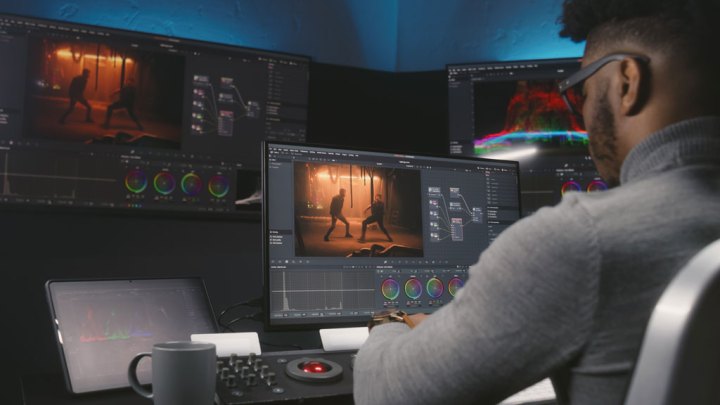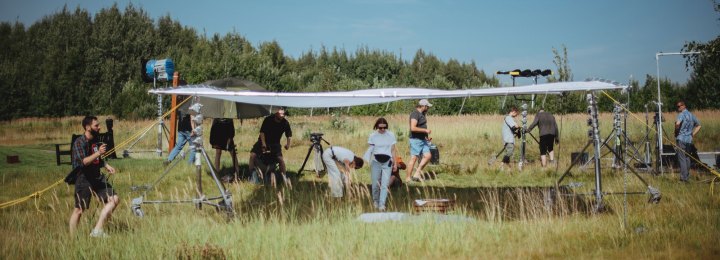In video production, the post-production phase is where all the editing takes place. It is a broad term that refers to the steps and stages in filmmaking after filming is complete. Learn more about the exact steps of this process.
In this post, we’ll cover:

- Top 18 Best Web Hosting Services In 2024: Despite there are multiple web hosting providers available in the market, choosing the best one is really a hard nut to crack!! Because almost all service providers are offering their services with the same features and quality.
- How to start your own Crypto currency website: For a cryptocurrency news website, choosing the right Content Management System (CMS) is crucial for managing content effectively, ensuring security, and providing a great user experience. Here are some of the best CMS options tailored for such a site, each with its unique strengths:
- The Evolution of Coffee Brewing Methods: A Historical Perspective: Coffee has been brewed and enjoyed for centuries, with various methods evolving over time to create the perfect cup of joe. From early methods like the Ibrik method and coffee pots for coffee houses to modern technologies like the AeroPress and Hario V60, the world of coffee brewing has come a long way.
- Stop WordPress from Creating Extra Cropped Image Sizes: Whenever you upload an image to your WordPress site through the media library, it automatically creates and stores multiple additional versions of that image. If your site doesn’t utilize these extra image sizes, they will consume valuable storage space and increase the size of your server backups.
- Explain WordPress Portfolio and how to created them: WordPress portfolios are digital showcases for individuals or businesses to display their work, projects, or professional accomplishments. This feature is particularly useful for creatives, freelancers, and agencies looking to exhibit their skills or services in a visually appealing and organized manner. Portfolios in WordPress can be created using various methods, including themes that come with built-in portfolio functionalities, plugins that add portfolio features, or custom coding for a more personalized approach.
- 15 Essential WordPress Plugins For Every Site: Plugins are essential for every type of website, as they provide additional features and customization options that are not available in the core WordPress platform. A study by CodeinWP found that the average WordPress site has 20 active plugins, indicating the importance of plugins in website development.
- SAILING and YACHTING: Awesome Sailing Vlogs for the Enthusiast
- Comparing Google and Microsoft’s Success in Capitalizing on Generative AI: The buzz of interest in AI services helped drive revenue for Microsoft’s biggest unit, cloud services—up by 7 percentage points compared to a year ago—and Microsoft’s overall sales rose 17 percent to nearly $62 billion. It also gained cloud market share, Nadella added. The number of $100 million cloud deals that Microsoft landed increased 80 percent during the quarter compared to the same period a year ago, and $10 million deals doubled.
- The Best WordPress Hosting Solution in Australia: Each of our WordPress hosting solutions are fine-tuned, blazing fast and are ready for you! Starting a WordPress website has never been easier with our free 1-click WordPress installation, enterprise-grade security and an assortment of tutorials and helpful guides to get you started, all backed by our 99.9% uptime guarantee.
- Elementor vs Beaver Builder: A Comparison of Design Flexibility and Performance in WordPress: Elementor and Beaver Builder are two of the most widely recognized options, each providing distinct features that cater to varying user requirements. This article conducts a comprehensive comparison of these tools, examining their design flexibility, performance metrics, and overall user experience.
- The Best Contact Form Plugins for WordPress to Easily Manage User Inquiries: In an effort to improve user interactions on WordPress websites hosting, the examination of contact form plugins becomes essential. This article aims to present an overview of the top 5 contact form plugins available for WordPress, highlighting their features and pricing structures to facilitate an well-considered choices process.
- What are the 20 best Joomla plugins: Joomla plugins are small, task-specific extensions that enhance or modify the core functionality of a Joomla website. They operate as event-driven scripts, listening for specific “events” triggered by Joomla or its components and executing corresponding actions. Plugins are a crucial part of Joomla’s extensibility, allowing developers to add features or customise behaviour without altering the core Joomla code.
- How to design a strong off-page SEO strategy: Lessons learnt from earning over 50,000 contextual links for thousands of websites in the toughest niches. In 2023, virtually every business that has a website is prioritizing their investment in SEO. The reason being, amidst the chaos of the current year, customers are resorting to online channels for safe purchasing, and optimizing their online presence is a surefire way to gain an edge over rivals. While some firms have set up internal teams, and others have hired external agencies to boost their search engine rankings, a documented off-page SEO strategy is still a rarity among most businesses.
- What are WordPress Plugins? WordPress plugins are modular pieces of software that can be added to a WordPress site to extend or enhance its functionality without modifying the core WordPress code. They allow website owners to add features, improve performance, and customise the behaviour of their websites easily, catering to a wide range of needs, from SEO and security to e-commerce and design enhancements.
Understanding the Post-Production Process
Ever wondered what exactly is post production?
Post-production is a broad term that refers to all the steps and stages in filmmaking after all the filming and shooting are done.
These steps include but are not limited to editing, working on the visual effects, color grading, sound editing and sound mixing, and, of course, final review.
With all these steps, a lot of creative professionals are involved in the post-prod team.
Here’s what they do:
Editing
Editing is one of the most crucial parts of post-production. This is where all the footage is reviewed, scrutinized, and assembled.
Not all footage gets into the finished product, so the metaphor “kill your darlings”—which is usually for writers—also applies here.

Editors have to have an eye for detail and should know exactly which portions of a scene to include and which to cut.
These decisions are made based on parts of the pre-production—like storyboarding and concept development.
Color Grading
Do you want that cinematic effect for your commercial? Or something bright and feels alive and energetic?
Thing is, depending on the size of your video project, shooting is sometimes done at different times of the day. Having a good colorist on your post production editing team is crucial in making sure all scenes look exactly the same.

If you want a particular scene to be warm, your colorist will most likely offer you different versions of it because there are many different kinds of warm—like the traditional yellow warm and the magenta warm.
And which of these work best? It’s the colorist who will suggest.
Visual Effects
This is probably one of the most fun parts of a film post production. But, just because it’s fun doesn’t mean it’s not difficult.
Visual effects make videos more alive and enhance the viewer’s experience—creating them is no joke.

Working on visual effects involves not just figuring out the best kind of visual effects to use that match the scene, but also where to put them. This can range from subtle changes to imaginary worlds or world-building.
This is done by experts who use assets like CGI (computer-generated imagery). Of course, these experts also know the best sources for CGIs.
Sound Editing and Mixing
Ever wonder why certain film’s sounds are so crisp, and others aren’t? Like when a scene is shot by the beach, for example, in some short films, the dialogue is so clear, and in others, the waves tend to be louder.
This could be because some projects have a budget for a sound mixer, and others don’t. This also iterates the importance of a sound mixer.

Sound editing and mixing is not just about making sure everything is clear and crisp. It also ensures that the audio levels throughout the film are where they should be. That the sound effects are not too loud—and when a character whispers, it sounds like a whisper.
Music and Score
Aside from sound editing and mixing, another important aspect of every film post production is scoring. This is where composers create instrumental music for a specific project.
Soundtrack, on the other hand, is music with vocals that are also used in films and other video projects.
If creating an original takes up so much time, there’s also an option to purchase stock music.
So, the tire screeches that you hear when there is no car shown in the video? Yes, those are most likely done by a good composer.
Final Editing and Export
By definition, post production is what happens after the actual producing or filming. That said, final editing and exporting are also parts of a video post-production process.
There is a lot going on in post-production, so if you’re wondering, How long does post-production take? The answer is, usually longer than the actual filming.
In the final editing stage, the director, post production supervisor, and editor usually work together to ensure the video project looks exactly how it should be – from the color and sound, to all the nuances you can think of.
Once they’re happy with the finished product, it’s time to export to your desired and agreed file format.
Factors That Impact the Post-Production Process
Wanting to have that cutting-edge, thought-provoking ad is one thing. Making sure you have a streamlined video editing and post production process is another.
Here are two aspects that may impact the process.
1. Size of the Production
The more people involved, the better. That is, if these folks work in harmony. Sometimes, the fewer people, the more smooth-sailing things are.
It’s important to balance the size of the production because, at the end of the day, it won’t matter if your company can afford a massive production team.
In film, what post-production is, isn’t always about the size of your team. What matters is what that production team produces.
2. Scope of the Production
Before any contract is signed, the scope of production should be crystal clear.
What deliverables do you want? Is it just a seven-minute clip, or do you want a trailer/teaser? If so, how many teasers do you need?
When do you need these things? Do you have any other particular expectations or specifics that you want to be included in this video project?
These elements are all part of the scope of the production. They should be laid out clearly while making sure you have room for any changes.
No matter how detailed and specific the planning is, some things are beyond control. It’s important to have space for that.

Hiring a Professional Crew for Video Production
If you’re still on the edge, wondering whether or not you should hire a professional crew, maybe ask yourself this question, Can my team actually handle this project?—and be honest with your answer.
It’s okay if they can’t. In fact, it’s a smarter business move to hire someone who knows exactly what they’re doing than you and your team just trying to wing it.
But, of course, every decision comes with pros and cons. Let’s weigh them.
Cost and Budgeting
But first, let’s talk about money.
Every video project, no matter how small, requires budget. The cost will depend on many things like deliverables, time-frame, how technical the project is, the size of the production team, whether or not you need specific locations, etc.
Take all these into consideration, talk to your team, have consults with various production companies, and see the numbers that come up.
If the numbers are too high, ask questions and get advice on how you can lower them.
Even though this is post production, nothing is set in stone here. There is always room to adjust. It’s just a matter of approaching it from a place of honesty and transparency.
Pros and Cons
Whether hiring a professional crew or not, both come with pros and cons.
One of the most obvious advantages of hiring a team is that you can simply hand them the whole project, and they’ll take care of everything.
You will only see the finished product once it’s done. And if things were clearly discussed, you’ll love the finished product.
Another is the quality of the output. Because you hired a professional crew, you can be sure they know what they’re doing.
Cons usually have something to do with money. Production teams are not cheap, and that is because their skills require a lot of time to learn and master.
However, this means not all companies can afford to hire a post production team.
FAQs
What are the steps in the post-production process?
The post-production process covers various steps, including editing, visual effects, color grading, musical scoring, and more.
How long does the post-production process usually take?
A post-production schedule varies, but it is usually longer than the actual filming time.
Why is the post-production process important?
A lot of enhancement happens during post production—from the visuals to the sound. This makes it an integral part of any video project.
License this cover image via Frame Stock Footage.
Recently viewed
Source: shutterstock.com



